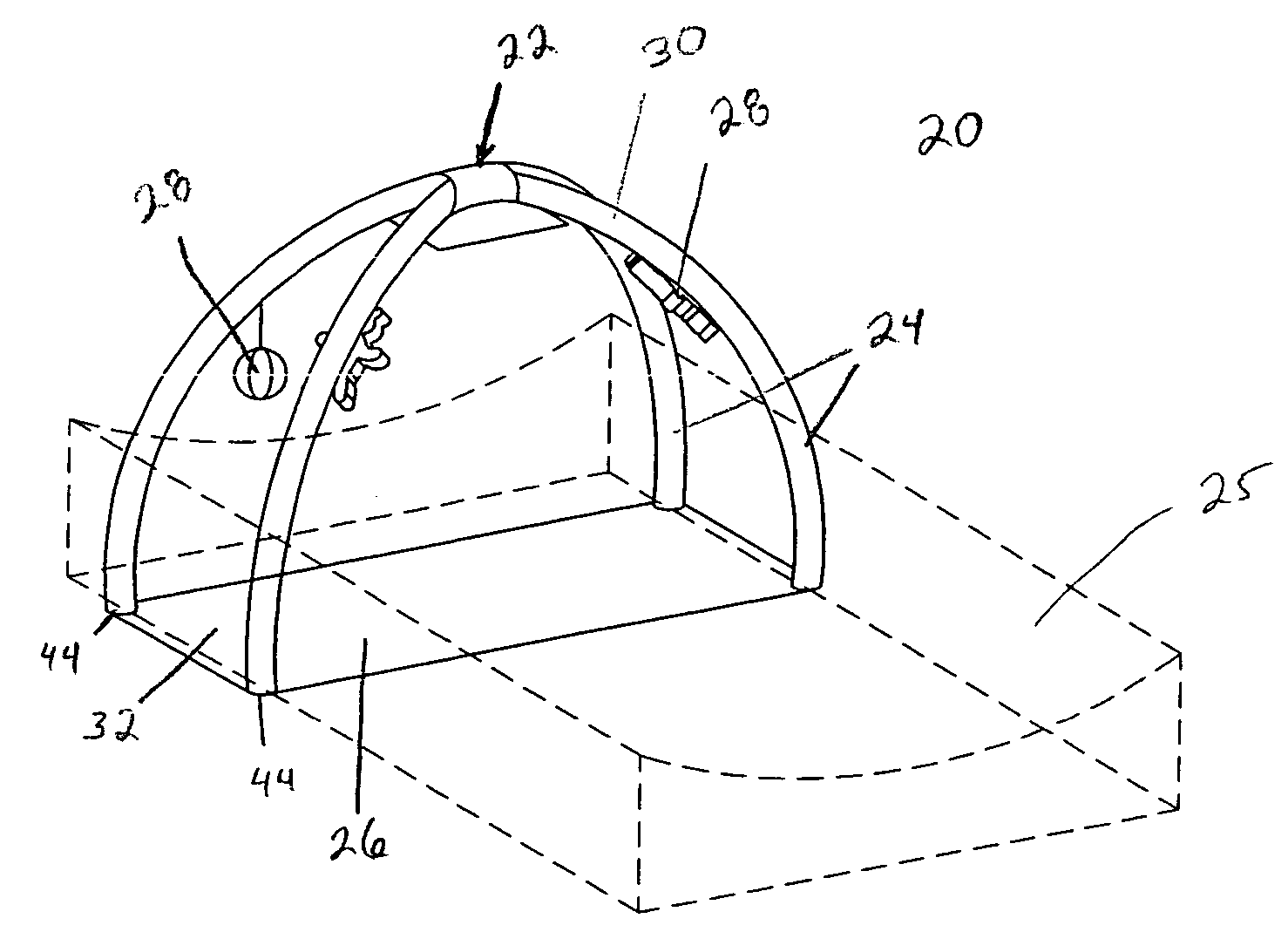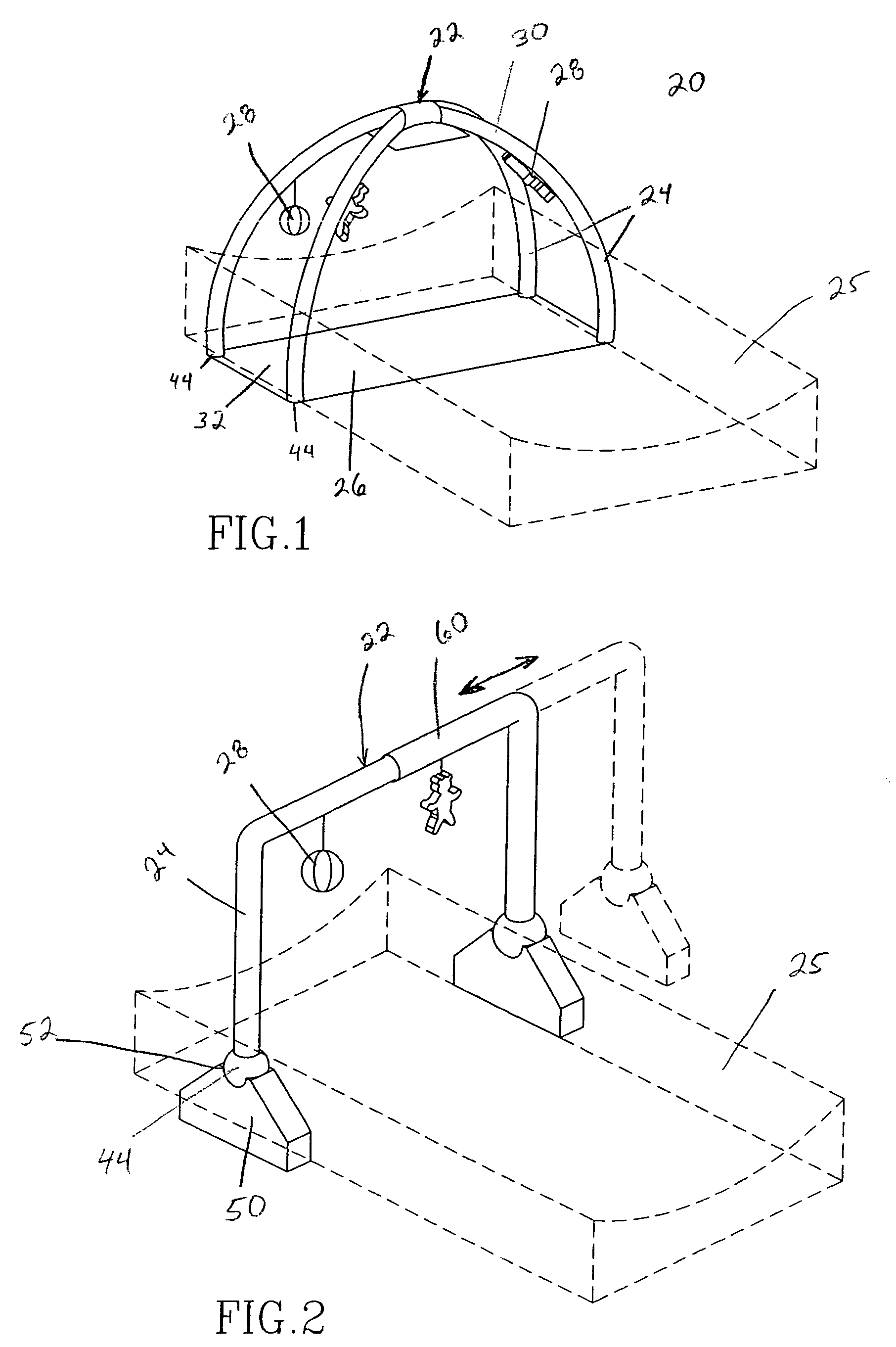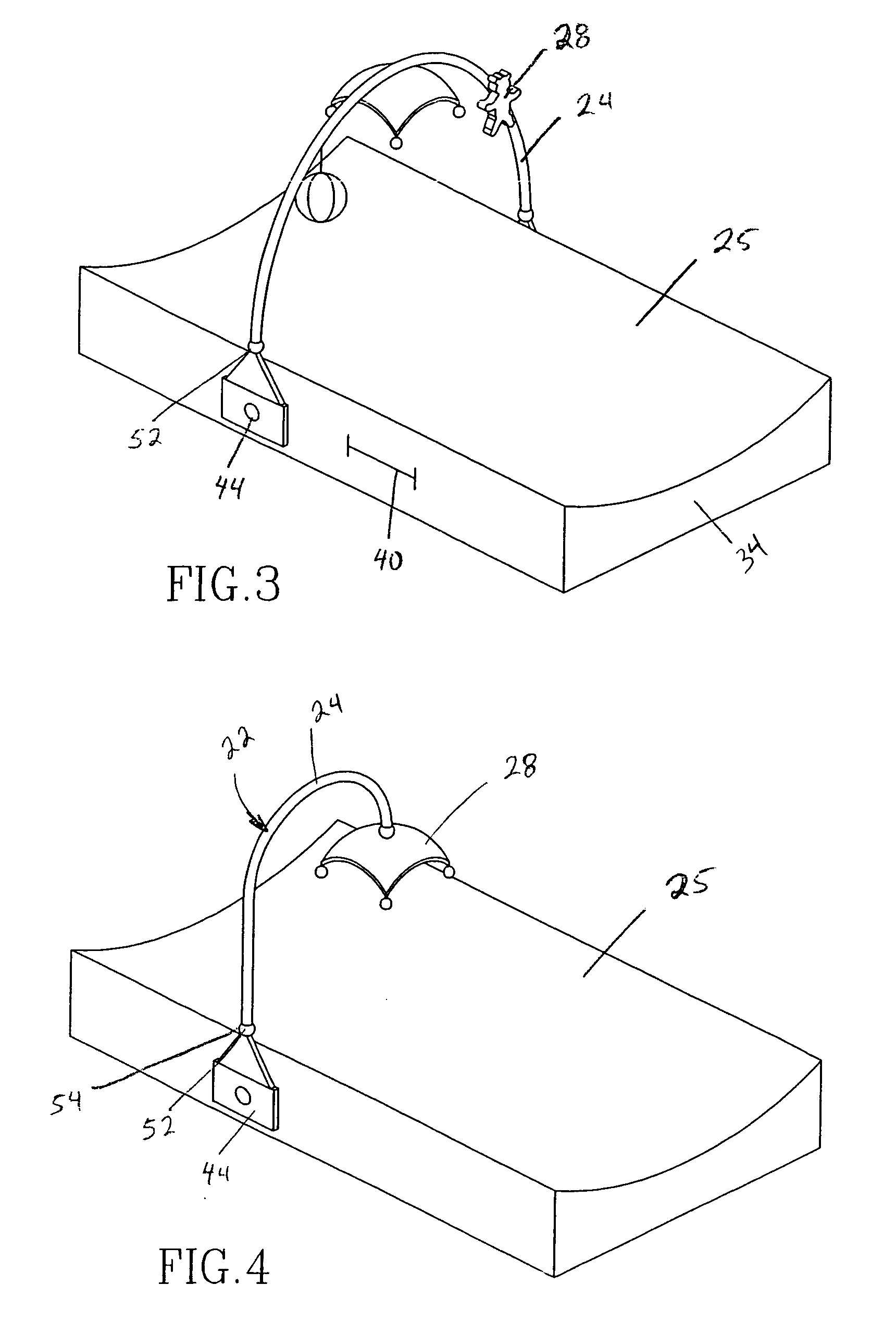Infant changing pad system
a diaper changing and infant technology, applied in the field of infant diaper changing pad system, can solve the problems of affecting the ability of caregivers to perform the function of changing diapers, affecting the comfort of caregivers, and infants to fuss, wriggle, and struggle to roll, and achieve the effect of convenient transportation
- Summary
- Abstract
- Description
- Claims
- Application Information
AI Technical Summary
Benefits of technology
Problems solved by technology
Method used
Image
Examples
Embodiment Construction
[0027] The present invention relates to an infant changing pad system that includes an activity member configured to be held in contact with a changing pad. This invention eases the stress of an infant during diaper changes by engaging the infant's interest. The activity member entertains an infant, thus diverting the infant's attention and hands away from the diaper changing process. Such a diversion decreases the degree of difficulty typically associated with diaper changing. The invention includes an activity member designed to entertain an infant, held in contact with a changing pad. Optionally, the activity member is held in contact with the changing pad through the use of a base member.
[0028] Referring now to the specific elements of the infant changing pad system, drawing FIG. 1 illustrates the apparatus 20 of the invention. The apparatus 20 includes an activity member 22, which includes at least one arch member 24. Any activity member known in the industry that engages the ...
PUM
 Login to View More
Login to View More Abstract
Description
Claims
Application Information
 Login to View More
Login to View More - R&D
- Intellectual Property
- Life Sciences
- Materials
- Tech Scout
- Unparalleled Data Quality
- Higher Quality Content
- 60% Fewer Hallucinations
Browse by: Latest US Patents, China's latest patents, Technical Efficacy Thesaurus, Application Domain, Technology Topic, Popular Technical Reports.
© 2025 PatSnap. All rights reserved.Legal|Privacy policy|Modern Slavery Act Transparency Statement|Sitemap|About US| Contact US: help@patsnap.com



